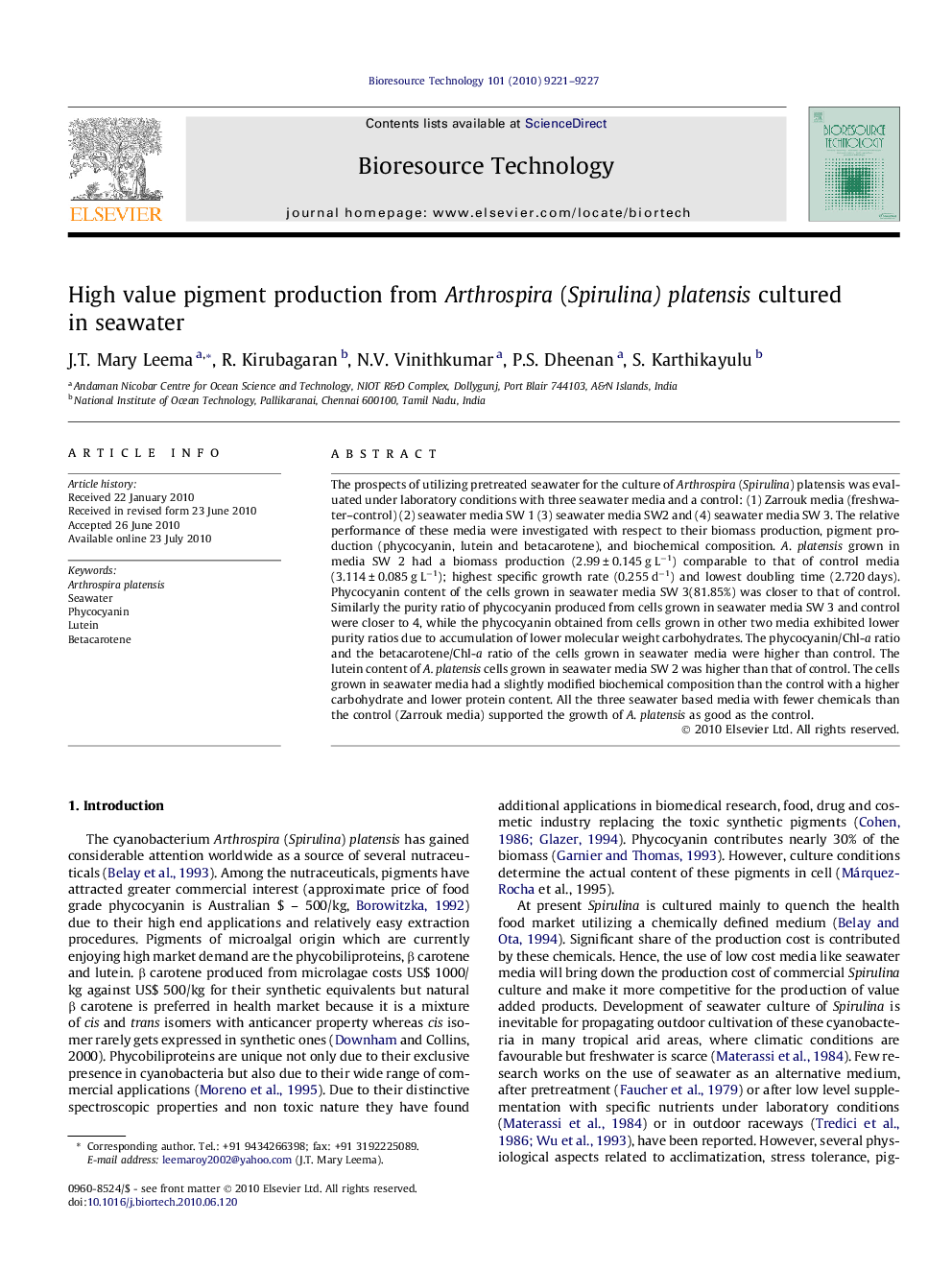| Article ID | Journal | Published Year | Pages | File Type |
|---|---|---|---|---|
| 681905 | Bioresource Technology | 2010 | 7 Pages |
The prospects of utilizing pretreated seawater for the culture of Arthrospira (Spirulina) platensis was evaluated under laboratory conditions with three seawater media and a control: (1) Zarrouk media (freshwater–control) (2) seawater media SW 1 (3) seawater media SW2 and (4) seawater media SW 3. The relative performance of these media were investigated with respect to their biomass production, pigment production (phycocyanin, lutein and betacarotene), and biochemical composition. A. platensis grown in media SW 2 had a biomass production (2.99 ± 0.145 g L−1) comparable to that of control media (3.114 ± 0.085 g L−1); highest specific growth rate (0.255 d−1) and lowest doubling time (2.720 days). Phycocyanin content of the cells grown in seawater media SW 3(81.85%) was closer to that of control. Similarly the purity ratio of phycocyanin produced from cells grown in seawater media SW 3 and control were closer to 4, while the phycocyanin obtained from cells grown in other two media exhibited lower purity ratios due to accumulation of lower molecular weight carbohydrates. The phycocyanin/Chl-a ratio and the betacarotene/Chl-a ratio of the cells grown in seawater media were higher than control. The lutein content of A. platensis cells grown in seawater media SW 2 was higher than that of control. The cells grown in seawater media had a slightly modified biochemical composition than the control with a higher carbohydrate and lower protein content. All the three seawater based media with fewer chemicals than the control (Zarrouk media) supported the growth of A. platensis as good as the control.
